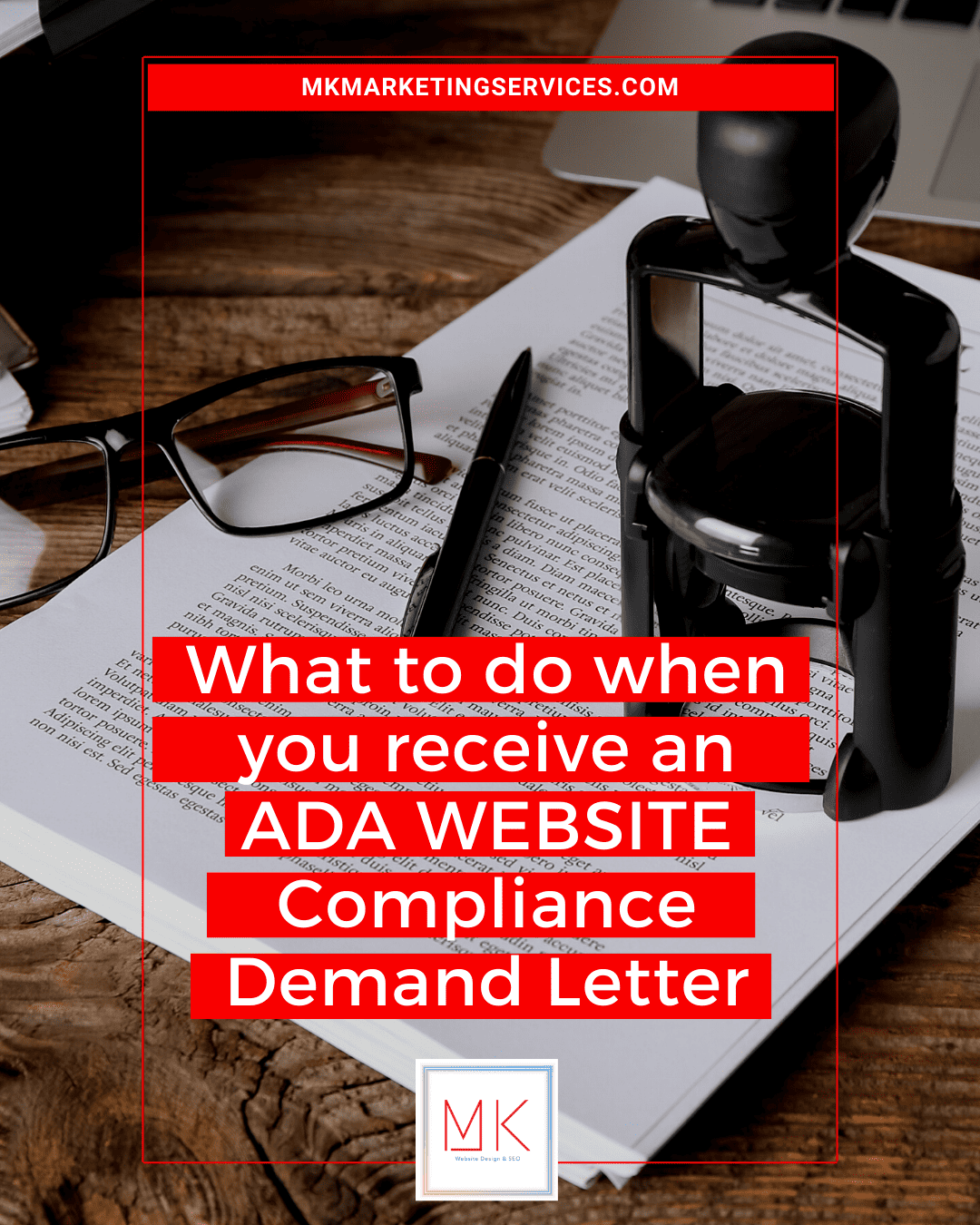Dealing with an ADA website compliance demand letter can be stressful, but be sure to take the letter seriously and respond promptly. The goal here is to address the issues appearing within the letter, and work toward compliance in an efficient and timely manner. We’ll go over the steps for addressing an ADA demand letter in detail next.
For your convenience, here’s a general overview of what you should do when you receive one:
- Understand the requirements for ADA website compliance
- Seek legal advice
- Review the letter and evaluate your website for compliance
- Remediate your website
- Answer the letter
1. Understand the requirements for ADA website compliance
As mentioned above, the Website Content Accessibility Guidelines (WCAG) are the primary protocols through which website accessibility is measured. Set forth by the World Wide Web Consortium (W3C), WCAG is relied on by businesses and organizations to create accessible websites.
WCAG 2.0, an earlier iteration of WCAG, provides a set of international standards for making web content accessible to people with disabilities.
In June of 2018, the World Wide Web Consortium published WCAG 2.1.
This updated version of the guidelines is considered the highest standard on web accessibility available today.
Both versions of WCAG have three levels you can conform to: Level A, Level AA, and Level AAA. Here’s a brief explanation of the differences between them:
- Level A is the minimum level of conformance and covers the most basic accessibility requirements
- Level AA expands on the requirements of Level A and includes additional guidelines for improved accessibility
- Level AAA is the highest level of conformance, and includes the most stringent accessibility requirements. It’s not mandatory for all websites to conform to Level AAA, but organizations may choose to do so to provide an optimal user experience to people with disabilities
Businesses can conform to any of the levels, but it’s best to aim for Level AA conformance.
It’s important to note that when individuals in the U.S. have sued businesses with websites that aren’t accessible under the ADA, courts have required those websites to conform with WCAG 2.0 Level AA. However, at the moment, WCAG 2.1 is the best measure for web accessibility under federal law. Consequently, if your website conforms to WCAG 2.1 Level AA, it is unlikely you’ll get sued for lack of accessibility.
To reach WCAG 2.1 Level AA conformance, website owners must address common website accessibility issues, including:
- Incompatibility with screen reader technology
- Insufficient color contrast
- Unlabeled form controls
- Lack of alternative text for meaningful images
- Missing page titles
- No captioning for audio and video content
- Inadequate keyboard navigation
- Non-accessible online documents (e.g., PDF files)
2. Seek legal advice
When you receive an ADA website compliance demand letter, you will probably have quite a few questions you’ll need answered, especially if it’s your first time receiving one. Seeking legal advice can help you learn how you should adequately-respond to this letter. A knowledgeable attorney with experience in ADA website compliance can help you understand the legal requirements and provide guidance on how to move forward.
Legal advice is especially beneficial if the demand letter mentions more advanced legal action. An attorney can assess the strength of the case against you, negotiate a resolution with the other party, or represent you in court, if such a scenario were to occur.
3. Review the letter and evaluate your website for compliance
When reviewing an ADA website compliance demand letter, read it carefully and take note of the identified issues. This will give you a good starting point for evaluating your website’s compliance status and identifying barriers to accessibility.
A comprehensive website audit will likely be necessary at this point.
You can review your website manually, and see how it conforms to WCAG 2.1 at the level it is expected to.
You can also run an automated test of your website, using tools such as accessScan. A free ADA website compliance tester, accessScan will run a quick, automated audit of your website, and determine whether it conforms to WCAG 2.1 Level AA. Your web page will be assigned a score: Compliant, semi-compliant, or non-compliant.
You will be presented with a more detailed breakdown of your website’s compliance status, that you can download as a PDF. Your website’s gaps in compliance will be highlighted in the report, along with instructions on how to address and remediate them.
Click here to use accessScan and identify what’s stopping your website from being ADA-compliant.
4. Remediate your website
Remediating your website to achieve ADA compliance is a critical step when responding to a demand letter. The goal here is to address the accessibility barriers identified in the letter and during the website audit. A successful remediation effort will result in your website becoming accessible to all website visitors, including people with disabilities.
You can achieve this goal by developing an action plan to address the identified issues. This may include making updates to the website’s code, redesigning certain features, or incorporating assistive technologies to support website visitors with disabilities.
Leveraging compliance tools can prove beneficial in this regard. Tools like accessWidget can be used to analyze your website and fix inaccessible code.
A good compliance tool will also enable website visitors to adjust your website’s design elements themselves. With accessWidget, website visitors can configure UI and design elements so they fit their specific abilities. These include modifying color contrasts, freezing animations and flashing images, and enabling single keyboard selection navigation.
Click here to read more about accessWidget and how it can help you reach ADA compliance.
Seeking help from a web developer or accessibility consultant is also an excellent way to ensure your website meets ADA and WCAG guidelines.
5. Answer the letter
Once you address the non-compliant elements on your website, it’s time to respond to the ADA website compliance demand letter. The goal here is to address the accessibility barriers identified and prove your commitment to making your website fully accessible.
Transparency and prompt communication are key when responding to an ADA website compliance demand letter. Let the sender know about the efforts you’ve made to make your website compliant, and of the steps you’ll take to continue making progress toward compliance. This shows your interest in building trust and providing website visitors with disabilities with an optimal and equal user experience.













